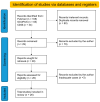Current Status of the Management of Idiopathic Condylar Resorption/Progressive Condylar Resorption-A Scoping Review
- PMID: 38999512
- PMCID: PMC11242904
- DOI: 10.3390/jcm13133951
Current Status of the Management of Idiopathic Condylar Resorption/Progressive Condylar Resorption-A Scoping Review
Abstract
The temporomandibular joint (TMJ) is a complex synovial joint shrouded in mystery, as the etiology of many TMJ disorders are unsolved. Idiopathic/progressive condylar resorption (ICR/PCR) is one such TMJ disorder characterized by a gradually deteriorating mandibular condylar mass, resulting in severe mandibular retrognathia, which often accompanied by clockwise rotation of mandible and an anterior open bite. Since the etiology of the ICR/PCR remains unclear, no definitive prevention or management options have been established. To date, various symptomatic non-surgical, surgical, and salvage management options have been developed and reported. To understand the current status of the ICR/PCR management options, this article provides an overview of the options presently reported in the literature to reduce its TMJ symptoms and improve mandibular function and form.
Keywords: idiopathic condylar resorption; management; progressive condylar resorption; treatment.
Conflict of interest statement
Author Mercuri is a compensated Clinical Consultant for Stryker/TMJ Concepts, Ventura, CA, USA. The authors declare that the research was conducted in the absence of any commercial or financial relationships that could be construed as a potential conflict of interest.
Figures
Similar articles
-
Characteristics of the Maxillofacial Morphology in Patients with Idiopathic Mandibular Condylar Resorption.J Clin Med. 2022 Feb 11;11(4):952. doi: 10.3390/jcm11040952. J Clin Med. 2022. PMID: 35207225 Free PMC article.
-
Histopathology of Idiopathic Condylar Resorption Differs From Temporomandibular Joint-Only Juvenile Idiopathic Arthritis.J Oral Maxillofac Surg. 2025 Jan;83(1):26-36. doi: 10.1016/j.joms.2024.10.001. Epub 2024 Oct 11. J Oral Maxillofac Surg. 2025. PMID: 39476870
-
Osseous changes of the mandibular condyle affect backward-rotation of the mandibular ramus in Angle Class II orthodontic patients with idiopathic condylar resorption of the temporomandibular joint.Cranio. 2019 Jul;37(4):264-271. doi: 10.1080/08869634.2017.1421446. Epub 2018 Jan 23. Cranio. 2019. PMID: 29359644
-
Diagnosis and management of idiopathic condylar Resorption: A review of literature.Saudi Dent J. 2024 Nov;36(11):1397-1405. doi: 10.1016/j.sdentj.2024.09.013. Epub 2024 Sep 13. Saudi Dent J. 2024. PMID: 39619720 Free PMC article. Review.
-
Idiopathic Condylar Resorption: What Should We Do?Oral Maxillofac Surg Clin North Am. 2020 Feb;32(1):105-116. doi: 10.1016/j.coms.2019.09.001. Epub 2019 Nov 1. Oral Maxillofac Surg Clin North Am. 2020. PMID: 31685348 Review.
Cited by
-
Differential effects of 17β-estradiol on knee and temporomandibular joints in ovariectomized rats.Sci Rep. 2025 Aug 17;15(1):30040. doi: 10.1038/s41598-025-15224-0. Sci Rep. 2025. PMID: 40820151 Free PMC article.
References
-
- Handelman C.S., Greene C.S. Progressive/Idiopathic condylar resorption: An orthodontic perspective. Semin. Orthod. 2013;19:55–70. doi: 10.1053/j.sodo.2012.11.004. - DOI
-
- Arnett G.W., Gunson M.J. Risk factors in the initiation of condylar resorption. Semin. Orthod. 2013;19:81–88. doi: 10.1053/j.sodo.2012.11.001. - DOI
-
- Sarver D.M., Janyavula S., Cron R.Q. Condylar degeneration and diseases–Local and systemic etiologies. Semin. Orthod. 2013;19:89–96. doi: 10.1053/j.sodo.2012.11.008. - DOI
Publication types
LinkOut - more resources
Full Text Sources


